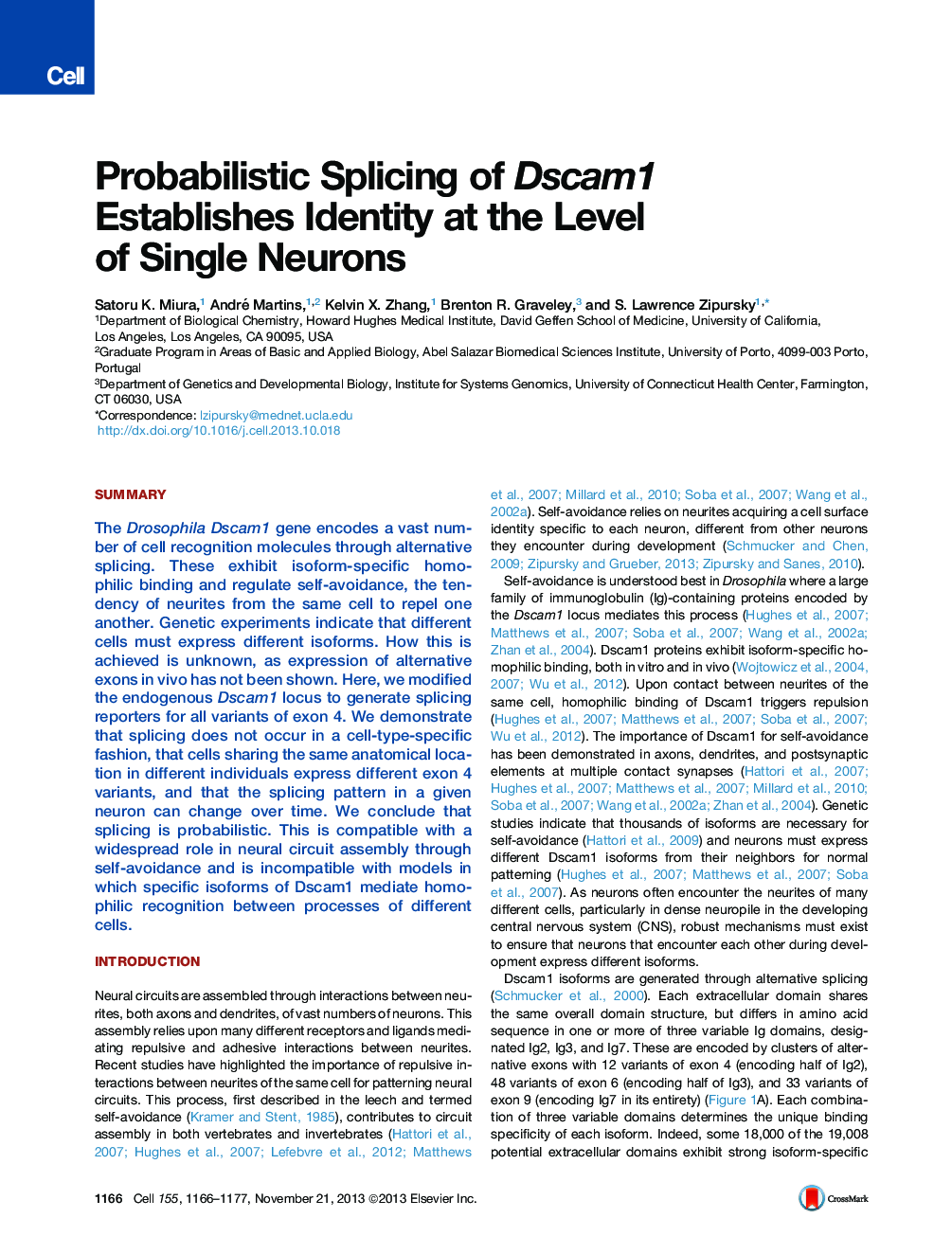| کد مقاله | کد نشریه | سال انتشار | مقاله انگلیسی | نسخه تمام متن |
|---|---|---|---|---|
| 2035653 | 1072201 | 2013 | 12 صفحه PDF | دانلود رایگان |

• Alternative splicing of Dscam1 is visualized in vivo using splicing reporters
• Cell-type- or spatial-specific splicing patterns between animals are not observed
• Alternative splicing of Dscam1 is probabilistic at the level of single neurons
• Splicing patterns suggest a widespread role for Dscam1 in self-avoidance
SummaryThe Drosophila Dscam1 gene encodes a vast number of cell recognition molecules through alternative splicing. These exhibit isoform-specific homophilic binding and regulate self-avoidance, the tendency of neurites from the same cell to repel one another. Genetic experiments indicate that different cells must express different isoforms. How this is achieved is unknown, as expression of alternative exons in vivo has not been shown. Here, we modified the endogenous Dscam1 locus to generate splicing reporters for all variants of exon 4. We demonstrate that splicing does not occur in a cell-type-specific fashion, that cells sharing the same anatomical location in different individuals express different exon 4 variants, and that the splicing pattern in a given neuron can change over time. We conclude that splicing is probabilistic. This is compatible with a widespread role in neural circuit assembly through self-avoidance and is incompatible with models in which specific isoforms of Dscam1 mediate homophilic recognition between processes of different cells.
Graphical AbstractFigure optionsDownload high-quality image (312 K)Download as PowerPoint slide
Journal: - Volume 155, Issue 5, 21 November 2013, Pages 1166–1177